Six Things You Don’t Know About Snow
Six Things You Don’t Know About Snow

FACT #1: Snow covers 30 percent of land on Earth.

FACT #2: More than 1.2 billion people rely on melt from snowpack and glaciers.

FACT #3: Snowmelt is the main source of water for 60 million Americans.

FACT #4: Since 1967, 1 million square miles of spring snow cover has disappeared from the Northern Hemisphere – an area the size of the southwestern U.S.

FACT #5: 70 percent of water from the snow-fed San Joaquin River irrigates California’s Central Valley.

FACT #6: NASA’s Global Precipitation Measurement mission observes falling snow, even at the tops of hurricanes.

Measuring how much water is in a snowpack is not easy. Scientists are investigating the best combination of sensors for different terrains. More accurate snow measurements will help scientists and decision makers better understand our world’s water supply and better predict floods and droughts.

To follow scientists in the field studying snow, follow #SnowEx on Twitter and Facebook
More Posts from Nasa and Others
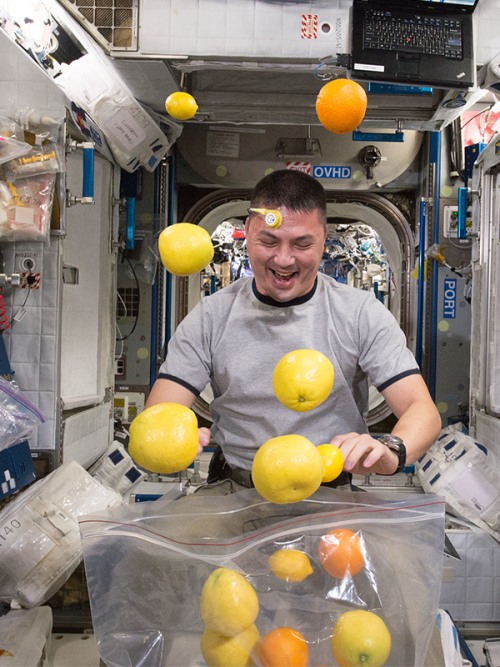
NASA Spotlight: Astronaut Kjell Lindgren
Kjell N. Lindgren was selected by NASA in 2009. Born in Taiwan while his family was stationed overseas, he spent most of his childhood abroad and returned to the U.S. to complete his education and earn a Doctorate of Medicine from the University of Colorado. He is board certified in emergency and aerospace medicine. After serving as the Deputy Crew Surgeon for Space Shuttle mission STS‐130 and Expedition 24, he was selected to join our astronaut corps. Dr. Lindgren flew on the International Space Station from July 2015 to December 2015 and logged 141 days in space. He participated in two spacewalks and in more than a hundred different scientific experiments. In his free time, Dr. Lindgren enjoys spending time with his family, running, reading, movies, photography and amateur astronomy.
He took some time from being a NASA astronaut to answer questions about his life and career! Enjoy:
What is one thing you would take to space that would make life easier?
A real R2 unit, of course! Just kidding, but in the future… Honestly though, life is pretty good on the International Space Station. While it is still a lot like camping (sleeping bags, no running water, rehydrated food) the space station team has really equipped us for success. As you all prepare for YOUR future spaceflight, I would say that the two most useful items I had with me on a daily basis were a pair of scissors and a spoon. The scissors were super useful for cutting plastic wrappers, tape, etc., and opening food packages (much more useful than a knife). And the spoon is the only utensil you need for eating – at least with the food system that we have right now.
Who helped get you to where you are?

Getting this opportunity, becoming an astronaut – that was a team effort for sure. I had so many people walking alongside me on this journey, helping me along the way. My parents set the bit early on – telling me that I could become whatever I wanted through hard work. They really gave me permission to dream big. Teachers and coaches, mentors, co-workers and friends all played a huge part in reaching this goal. Most of all, though, my wife, Kristi and my three kids have been an integral part of this adventure. I would not have this job, and I wouldn’t be successful in it without their love and daily support.
You and your crew mates were the first astronauts to harvest lettuce grown on orbit. How did it taste?

The lettuce tasted like…lettuce, which was a good thing, because if it hadn’t, then it meant we had made a huge mistake. It was so much fun to be a part of that experiment. The payoff, getting to eat fresh grown food on orbit was of course, a lot of fun. But just getting to take care of the lettuce plant, watch it grow in the sterile looking environment of the space station, getting to take care of this living thing on a daily basis, it was good for the soul.
How do you prepare for someone getting hurt or sick in space?
We train at least two crew members on every expedition to be Crew Medical Officers, or CMOs. They spend about 40 – 50 hours learning how to use the medical equipment and procedures on the space station, so that they can essentially serve as an extension of the flight surgeon in mission control. We have equipment and medication to deal with most minor illnesses and injuries. But because we are in low earth orbit, we can evacuate an ill crew member back to Earth in the event of a severe medical issue. This option won’t be available as we push out further from Earth, so we’ll need more rigorous training and a more comprehensive medical system.
How many times did you apply to be an astronaut?

I was very fortunate and got selected on my first try. I have several friends in the office though, who applied 4 or 5 times before being selected. It is amazing to go through the selection process and to meet others who share your dream. Enjoy the experience and keep applying – it is worth it!
How can I improve my chances of being selected to become an astronaut?
I recommend continuing to do things that you enjoy, continue to build experience at work and maybe look for new opportunities in your job that will grow you in your career and grow you as a leader. But choose opportunities because YOU want to do them, not based on what you think NASA is looking for. There is no one path or experience that leads to becoming an astronaut. We have an amazing diversity of experience and background in the astronaut office.
What advice do you have for the newest astronauts?

Enjoy the journey! Spaceflight is amazing, but even as astronauts, most of us spend 95% of our career on the ground. Enjoy every part of the job, supporting missions as a Spacecraft Communicator (CapCom), verifying procedures for a repair or training for a spacewalk. It is amazing to be a part of the team that launches and supports humans living and working in space. It is an amazing thing.
Which is more exciting: spacewalking or skydiving?

Skydiving was pretty amazing. I got to do quite a bit of it as a member of the Air Force Academy parachute team. But there is nothing quite like doing a spacewalk. It is an indescribable experience, putting hundreds of hours of training to work, the physical and mental challenge of operating in that harsh environment. But the view outside the space station, of the Earth, the stars, the structure of the space station – it was a highlight of my time in space and something I will never forget.
What's the most interesting part about training with the Dragon capsule?
It has been awesome working with the NASA and SpaceX teams as we are preparing to launch in the Crew Dragon capsule. My favorite part of the experience has always been and continues to be the people. Safely sending humans to space and back is one of the most difficult things humanity has ever done. That challenge attracts the best and brightest people from across our country. Getting to work with those folks at NASA and at SpaceX, to experience their enthusiasm, dedication and ingenuity on a daily basis is a gift. It has also been a lot of fun seeing a different approach to human spaceflight. I’m very familiar with how NASA and the Russian Space Agency Roscosmos operate. It has been fun seeing a different perspective and approach.
Can you share your favorite photo or video that you took in space?

Yes! This is my favorite photo of the Milky Way, with a lightning strike illuminating a solar array.
Thanks Dr. Lindgren, and good luck on your next spaceflight!
Make sure to follow us on Tumblr for your regular dose of space: http://nasa.tumblr.com.
Boo-tiful Ring Galaxies

A ghoulish secret lurks within each of these gorgeous galaxies. Their rings are dotted with stellar graveyards!

These objects are called ring galaxies, and scientists think most of them form in monster-sized crashes. Not just any galaxy collision will do the trick, though. To produce the treat of a ring, a smaller galaxy needs to ram through the center of a larger galaxy at just the perfect angle.

The collision causes ripples that disturb both galaxies. The gravitational shock causes dust, gas, and stars in the larger galaxy’s disk to rush outward. As this ring of material plows out from the galaxy’s center, gas clouds collide and trigger the birth of new stars.

In visible light, the blue areas in the galaxies’ rings show us where young, hot stars are growing up. Faint, pink regions around the ring mark stellar nurseries where even younger stars set hydrogen gas aglow.
The newborn stars come in a mix of sizes, from smaller ones like our Sun all the way up to huge stars with tens of times the Sun’s mass. And those massive stars live large!
While a star like our Sun will last many billions of years before running out of fuel, larger stars burn much brighter and faster. After just a few million years, the largest stars explode as supernovae. When massive stars die, they leave behind a stellar corpse, either a neutron star or black hole.

When we turn our X-ray telescopes to these ring galaxies, we see telltale signs of stellar remnants dotted throughout their ghostly circles. The purple dots in the X-ray image above are neutron stars or black holes that are siphoning off gas from a companion star, like a vampire. The gas reinvigorates stellar corpses, which heat up and emit X-rays. These gas-thirsty remains are beacons lighting the way to stellar graveyards.
Spiral galaxies — like our home galaxy, the Milky Way — have curved arms that appear to sweep out around a bright center. The dust and gas in those spiral arms press together, causing cycles of star formation that result in a more even mix of new stars and stellar corpses scattered throughout our galaxy. No creepy ring of stellar corpses here!
To visit some other eerie places in the universe, check out the latest additions to the Galaxy of Horrors poster series and follow NASA Universe on Twitter and Facebook for news about black holes, neutron stars, galaxies, and all the amazing objects outside our solar system.
Make sure to follow us on Tumblr for your regular dose of space: http://nasa.tumblr.com
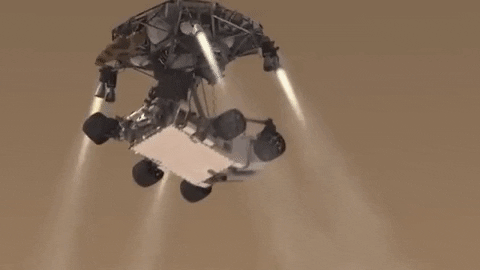
INCOMING! Roving scientist to arrive on Mars.
Save the date! One year from today, Feb. 18, 2021, our next rover is set to land on Mars. Get to know #Mars2020 now! Click here.
Make sure to follow us on Tumblr for your regular dose of space: http://nasa.tumblr.com
Stop. Drop. And Apply to #BeAnAstronaut!

Feel like your place is in the stars? Are you an adventure seeker, an explorer, a person passionate about science and space? We need you!!

Applications are OPEN for our newest class of #Artemis astronauts. Once chosen, you could be the next person to step foot on the Moon and eventually embark on missions to Mars!

Do you have a friend who should apply? Tag them. Do you know someone who's still in school? Encourage them to follow their dreams and aim high.

To give you a sneak peak of what life will be like if you decide to #BeAnAstronaut, we’re taking you behind-the-scenes of astronaut life over the course of March.

APPLY NOW AND GET MORE INFORMATION HERE!
Make sure to follow us on Tumblr for your regular dose of space: http://nasa.tumblr.com
The Science Behind the Summer Solstice
Today – Thursday, June 21 – is the summer solstice in the northern hemisphere. But what causes this change in seasons? And what exactly is a solstice? It’s all about Earth’s tilt!
Many people believe that Earth is closer to the Sun in the summer and that is why it is hotter. And, likewise, they think Earth is farthest from the Sun in the winter.
Although this idea makes sense, it is incorrect. There is a different reason for Earth's seasons.

Earth's axis is an imaginary pole going right through the center of Earth from "top" to "bottom." Earth spins around this pole, making one complete turn each day. That is why we have day and night, and why every part of Earth's surface gets some of each.

Earth has seasons because its axis doesn't stand up straight. Today, the north pole is tipped toward the Sun, and the south pole is tipped away from the Sun. The northern summer solstice is an instant in time when the north pole of the Earth points more directly toward the Sun than at any other time of the year. It marks the beginning of summer in the northern hemisphere and winter in the southern hemisphere.

To mark the beginning of summer, here are four ways to enjoy the many wonders of space throughout the season:
1. Spot the International Space Station
As the third brightest object in the sky, the International Space Station is easy to see if you know when to look up. Sign up to get alerts when the station is overhead: https://spotthestation.nasa.gov/. Visible to the naked eye, it looks like a fast-moving plane only much higher and traveling thousands of miles an hour faster!

2. Treat your ears to space-related podcasts
From our “Gravity Assist” podcast that takes you on a journey through the solar system (including the Sun!) to our “NASA in Silicon Valley” podcast that provides an in-depth look at people who push the boundaries of innovation, we have podcast offerings that will suit everyone’s taste. For a full list of our podcasts, visit https://www.nasa.gov/podcasts.

3. Explore space by downloading NASA apps
Our apps for smartphones, tablets and digital media players showcase a huge collection of space-related content, including images, videos on-demand, NASA Television, mission information, feature stories, satellite tracking and much more. For a full list of our apps available for download, visit https://www.nasa.gov/connect/apps.html

4. Watch launches to space
This summer, we have multiple opportunities for you to take in the sights of spacecraft launches that will deliver supplies and equipment to astronauts living aboard the International Space Station, explore our solar system and much more. Be sure to mark your calendar for upcoming launches and landings!

Make sure to follow us on Tumblr for your regular dose of space: http://nasa.tumblr.com
Solar System: Things to Know This Week
Ready for a free show? Here’s our guide to the brightest shows on Earth for 2017--meteor showers! And, there’s no telescope required.
The sky may not be falling, but it can certainly seem that way during a meteor shower. Shooting stars, as meteors are sometimes called occur when rock and debris in space fall through the Earth's atmosphere, leaving a bright trail as they are heated to incandescence by friction with the air. Sometimes the number of meteors in the sky increases dramatically, becoming meteor showers. Some showers occur annually or at regular intervals as the Earth passes through the trail of dusty debris left by a comet. Here's a guide to the top meteor showers expected in 2017.

1. Quadrantids, January 3-4
At its peak this shower will have about 40 meteors per hour. The parent comet is 2003 EH1, which was discovered in 2003. First quarter moon sets after midnight and meteors radiate from the constellation Bootes.

2. Eta Aquarids, May 6-7
This shower will have up to 60 meteors per hour at its peak and is produced by dust particles left behind by comet Halley, which has been known and observed since ancient times. The shower runs annually from April 19 to May 28. The waxing gibbous moon will block out many of the fainter meteors this year. Meteors will radiate from the constellation Aquarius.

3. Perseids, August 12-13
The annual Perseid shower will have up to 60 meteors per hour at its peak. It is produced by comet Swift-Tuttle. The Perseids are famous for producing a large number of bright meteors. The shower runs annually from July 17 to August 24. The waning gibbous moon will block out many of the fainter meteors this year, but the Perseids are so bright and numerous that it should still be a good show. Meteors will radiate from the constellation Perseus.

4. Draconids, October 7
This is a minor shower that will produce only about 10 meteors per hour. It is produced by dust grains left behind by comet 21P Giacobini-Zinner, which was first discovered in 1900. The Draconids is an unusual shower in that the best viewing is in the early evening instead of early morning like most other showers. The shower runs annually from October 6-10 and peaks this year on the the night of the 7th. Unfortunately, the nearly full moon will block all but the brightest meteors this year. If you are extremely patient, you may be able to catch a few good ones. Meteors will radiate from the constellation Draco.

5. Geminids, December 13-14
The Geminids may be the best shower, producing up to 120 meteors per hour at its peak. It is produced by debris left behind by an asteroid known as 3200 Phaethon, which was discovered in 1982. The shower runs annually from December 7-17. The waning crescent moon will be no match for the Geminids this year. The skies should still be dark enough for an excellent show. Meteors will radiate from the constellation Gemini, but can appear anywhere in the sky.
Discover the full list of 10 things to know about our solar system this week HERE.
Make sure to follow us on Tumblr for your regular dose of space: http://nasa.tumblr.com
NASA Astronauts Robert Behnken and Douglas Hurley undock from the International Space Station at 7:34 p.m. EDT tonight, bringing to a close their ~2 month Launch America mission. Check out these science highlights from the 100+ hours of work they completed aboard the orbital lab.
Watch live coverage of undocking and splashdown here: https://www.nasa.gov/nasalive
Make sure to follow us on Tumblr for your regular dose of space: http://nasa.tumblr.com
Solar System: 2016 Preview
What do we have planned for 2016? A return to the king of planets. A survey of mysterious Ceres. More postcards from Pluto. Anyone who follows solar system exploration in 2016 is in for quite a ride. Last year was one for the record books – and now here are 10 things to look forward to in the new year. See also: what we have planned agency wide for 2016.
Juno Arrives at Jupiter

July 4, 2016 is arrival day for the Juno mission, the first sent expressly to study the largest planet in the solar system since our Galileo mission in the 1990s. Humans have been studying Jupiter for hundreds of years, yet many basic questions about the gas world remain: How did it form? What is its internal structure? Exactly how does it generate its vast magnetic field? What can it tell us about the formation of other planets inside and outside our solar system? Beginning in July, we’ll be a little closer to the answers.
OSIRIS-REx Takes Flight
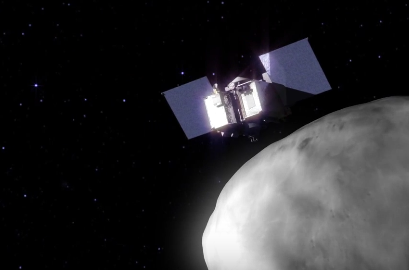
The OSIRIS-REx mission, short for Origins-Spectral Interpretation-Resource Identification-Security-Regolith Explorer, sets sail for an asteroid in September. The spacecraft will use a robotic arm to pluck samples from the asteroid Bennu to help better explain our solar system’s formation and even find clues to how life began.
Dawn Sees Ceres Up Close

After an odyssey of many years and millions of miles, in December the Dawn spacecraft entered its final, lowest mapping orbit around the dwarf planet Ceres. The intriguing world’s odd mountains, craters and salty deposits are ready for their close-ups. We can expect new images of the starkly beautiful surface for months.
Cassini Commences Its Grand Finale

In late 2016, the Cassini spacecraft will begin a daring set of orbits called the Grand Finale, which will be in some ways like a whole new mission. Beginning this year and extending into next, the spacecraft will repeatedly climb high above Saturn’s poles, flying just outside its narrow F ring 20 times. After a last targeted Titan flyby, the spacecraft will then dive between Saturn’s uppermost atmosphere and its innermost ring 22 times. As Cassini plunges past Saturn, the spacecraft will collect rich and valuable information far beyond the mission’s original plan.
New Horizons Sends More Postcards from Pluto

We have stared slack-jawed at the images and discoveries from last year’s Pluto flyby, but the fact is that most of the data that New Horizons collected remains on board the spacecraft. In 2016, we’ll see a steady release of new pictures — and very likely some expanded answers to longstanding questions.
Mars Missions March Forward
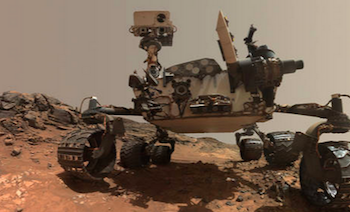
With five of our missions continuing their Martian quests, 2016 should be a good year for discoveries on the Red Planet.
Mars Odyssey
Mars Opportunity
Mars Reconnaissance Orbiter
Mars Curiosity
MAVEN
Mercury Transits the Sun

A transit is a very rare astronomical event in which a planet passes across the face of the sun. In May, Mercury will transit the sun, on of only thirteen Mercury transits each century on average.
LRO Keeps an Eagle Eye On the Moon

The Lunar Reconnaissance Orbiter (LRO) will extend its run in 2016, scanning the moon’s surface with its sharp-eyed instruments, investigating everything from lava tube skylights to changes at the Apollo landing sites.
Spacecraft Fly Under Many Flags

Our partner agencies around the world will be flying several new or continuing planetary missions to destinations across the solar system:
Akatsuki at Venus
ExoMars
Mars Express
Mars Orbiter Mission
Rosetta at Comet 67/P
Technology Demonstration Missions Push the Envelope
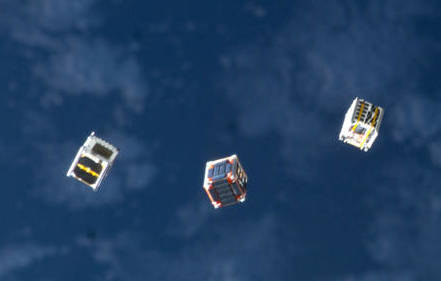
We’re always looking for new frontiers on distant worlds, as well as the technology that will take us there. This year, several missions are planned to take new ideas for a spin in space:
Deep Space Atomic Clock
NODES
LDSD
Make sure to follow us on Tumblr for your regular dose of space: http://nasa.tumblr.com
For more information, visit: https://www.missionjuno.swri.edu/junocam/processing?id=182

Purple haze, all around. See Jupiter in a whole new light in this citizen scientist-created JunoCam image.
Five Facts About the Kepler Space Telescope That Will Blow You Away!

Ten years ago, on March 6, 2009, a rocket lifted off a launch pad at Cape Canaveral Air Force Station in Florida. It carried a passenger that would revolutionize our understanding of our place in the cosmos--NASA’s first planet hunter, the Kepler space telescope. The spacecraft spent more than nine years in orbit around the Sun, collecting an unprecedented dataset for science that revealed our galaxy is teeming with planets. It found planets that are in some ways similar to Earth, raising the prospects for life elsewhere in the cosmos, and stunned the world with many other first-of-a-kind discoveries. Here are five facts about the Kepler space telescope that will blow you away:
Kepler observed more than a half million stars looking for planets beyond our solar system.

It discovered more than 2,600 new worlds…

…many of which could be promising places for life.

Kepler’s survey revealed there are more planets than stars in our galaxy.

The spacecraft is now drifting around the Sun more than 94 million miles away from Earth in a safe orbit.

NASA retired the Kepler spacecraft in 2018. But to this day, researchers continue to mine its archive of data, uncovering new worlds.
*All images are artist illustrations. Make sure to follow us on Tumblr for your regular dose of space: http://nasa.tumblr.com
-
 joshtucson liked this · 2 years ago
joshtucson liked this · 2 years ago -
 mypembrokeca liked this · 4 years ago
mypembrokeca liked this · 4 years ago -
 monbeauloup liked this · 5 years ago
monbeauloup liked this · 5 years ago -
 diangelo-cat liked this · 5 years ago
diangelo-cat liked this · 5 years ago -
 timetosblog reblogged this · 7 years ago
timetosblog reblogged this · 7 years ago -
 ljs-lj reblogged this · 7 years ago
ljs-lj reblogged this · 7 years ago -
 lianakendall liked this · 7 years ago
lianakendall liked this · 7 years ago -
 jihankarima reblogged this · 7 years ago
jihankarima reblogged this · 7 years ago -
 ntbtrsyixx liked this · 7 years ago
ntbtrsyixx liked this · 7 years ago -
 substancehi liked this · 7 years ago
substancehi liked this · 7 years ago -
 dovahawking reblogged this · 7 years ago
dovahawking reblogged this · 7 years ago -
 dcstreet liked this · 8 years ago
dcstreet liked this · 8 years ago -
 thedivinemissema reblogged this · 8 years ago
thedivinemissema reblogged this · 8 years ago -
 dragonslayeracademy reblogged this · 8 years ago
dragonslayeracademy reblogged this · 8 years ago -
 iwillspitinyourmouth liked this · 8 years ago
iwillspitinyourmouth liked this · 8 years ago -
 queercateer reblogged this · 8 years ago
queercateer reblogged this · 8 years ago -
 evergreen-su8 liked this · 8 years ago
evergreen-su8 liked this · 8 years ago -
 comedowntheroad-blog liked this · 8 years ago
comedowntheroad-blog liked this · 8 years ago -
 shotfromguns reblogged this · 8 years ago
shotfromguns reblogged this · 8 years ago -
 syzara liked this · 8 years ago
syzara liked this · 8 years ago -
 joomju reblogged this · 8 years ago
joomju reblogged this · 8 years ago -
 tiredsapphicbookwitch liked this · 8 years ago
tiredsapphicbookwitch liked this · 8 years ago -
 joomju liked this · 8 years ago
joomju liked this · 8 years ago -
 faejilly reblogged this · 8 years ago
faejilly reblogged this · 8 years ago -
 shotfromguns liked this · 8 years ago
shotfromguns liked this · 8 years ago -
 pantsvaporation reblogged this · 8 years ago
pantsvaporation reblogged this · 8 years ago
Explore the universe and discover our home planet with the official NASA Tumblr account
1K posts